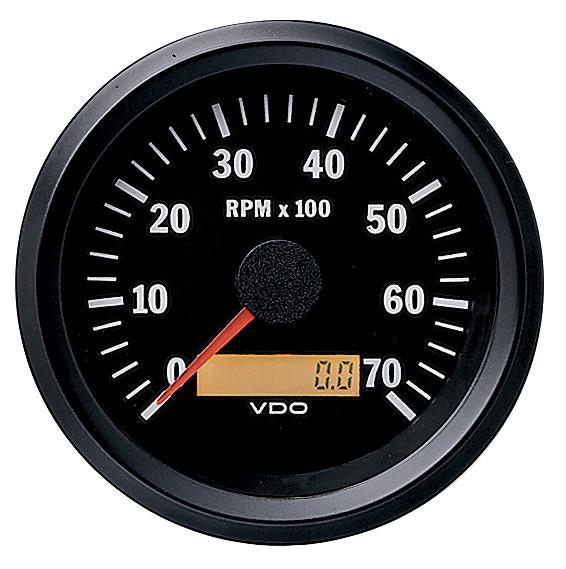The Relevance of a Tachometer in Checking Engine Rate and Efficiency in Automotive Applications
In the world of vehicle engineering, the tachometer stands as a pivotal instrument in the vehicle driver's arsenal, giving a straight window into the internal operations of a vehicle's engine. Past its feature as a plain scale of changes per min (RPM), the tachometer functions as a critical tool for lovers and experts alike, using real-time understandings right into engine performance and wellness. Understanding the importance of this tool surpasses surface-level monitorings, delving into the elaborate connection between engine speed, power outcome, and total driving experience. As we discover the diverse role of the tachometer in vehicle applications, a deeper recognition for its effect on vehicle dynamics and performance starts to arise.
Value of Keeping An Eye On Engine RPM
Keeping an eye on engine RPM, or revolutions per min, is an important aspect of automobile maintenance and performance evaluation. Engine RPM directly associates with the speed at which the engine's crankshaft revolves, indicating exactly how swiftly the engine is running.
In addition, checking engine RPM is vital for performance analysis in auto racing and high-performance cars. Maintaining optimal RPM levels is important for achieving peak power result and acceleration. Racers typically use tachometers to ensure they are operating within the perfect RPM variety for maximum performance. In recap, checking engine RPM is not just essential for finding problems but also for maximizing engine efficiency in different vehicle applications.

Advantages of Real-Time Data
In vehicle applications, real-time information plays an important duty in providing instant understandings into the performance and condition of the vehicle. By continuously monitoring various parameters such as engine rate, temperature, gas consumption, and extra, real-time data offers various benefits that add to enhanced performance and safety and security when driving.
Additionally, real-time information helps with efficiency optimization by giving prompt responses on driving behaviors and engine performance. Motorists can adjust their habits in real-time based on this details to attain far better gas economic situation and lengthen the life-span of their automobile.

In addition, real-time data plays a vital role in modern automobile diagnostics, allowing service technicians to rapidly identify and resolve malfunctions. This leads to reduced downtime, reduced upkeep costs, and eventually, enhanced total vehicle reliability and longevity (tachometer). By harnessing the power of Full Report real-time information, automobile stakeholders can make enlightened choices that favorably impact both the efficiency and longevity of the car
Effect On Equipment Shifts
The tachometer plays a crucial duty in enhancing equipment changes by offering real-time engine speed data to the motorist. When approaching the redline on the tachometer, it signals the chauffeur to upshift to prevent over-revving the engine and triggering possible damages.
Additionally, the tachometer aids in attaining smoother equipment transitions, specifically in hands-on transmissions. By monitoring engine rate, chauffeurs can implement gear shifts at the ideal RPM array, minimizing jerking activities and decreasing wear on the transmission parts. This accuracy in gear adjustments not only enhances driving convenience however also adds to sustain effectiveness.
Enhancing Gas Effectiveness
Provided the critical role the tachometer plays in optimizing equipment changes for efficiency and engine health, it directly adds to taking full advantage of fuel effectiveness in vehicle applications. By giving real-time feedback on engine rate, the tachometer aids vehicle drivers in maintaining the most efficient RPM variety for fuel economic climate. When motorists continually monitor the tachometer and readjust their driving routines appropriately, they can prevent unneeded gas consumption triggered by over-revving or lugging the engine.
Additionally, the tachometer helps vehicle drivers determine one of the most fuel-efficient equipment to be in at any provided try this minute, protecting against the engine from functioning tougher than needed. This is particularly important during acceleration and cruising, where being in the ideal gear can considerably impact fuel performance. Additionally, the tachometer can inform motorists to potential mechanical issues that can be negatively impacting gas economic situation, such as a slipping clutch or a clogged up air filter. In conclusion, the tachometer functions as a beneficial tool in boosting gas performance by promoting optimum driving habits and determining areas for improvement in the car's efficiency.

Taking Full Advantage Of Engine Long Life
The tachometer's role in monitoring engine rate and efficiency contributes in guaranteeing the longevity of auto engines. By utilizing the tachometer effectively, vehicle drivers can enhance engine longevity through conscious RPM administration. Consistently revving an engine expensive can bring about too much damage on essential elements, such as the pistons, valves, and bearings. Gradually, this can result in decreased engine efficiency and potential malfunctions. Keeping track of the tachometer permits vehicle drivers to stay within the recommended RPM array for their lorry, stopping unnecessary check my reference stress on the engine and prolonging its life-span.

Final Thought
Finally, the tachometer plays a vital role in checking engine rate and efficiency in vehicle applications. By providing real-time information on RPM, it enables for effective equipment shifts, improved gas efficiency, and made the most of engine durability. This device is important for maintaining ideal engine efficiency and ensuring the overall performance of a vehicle.